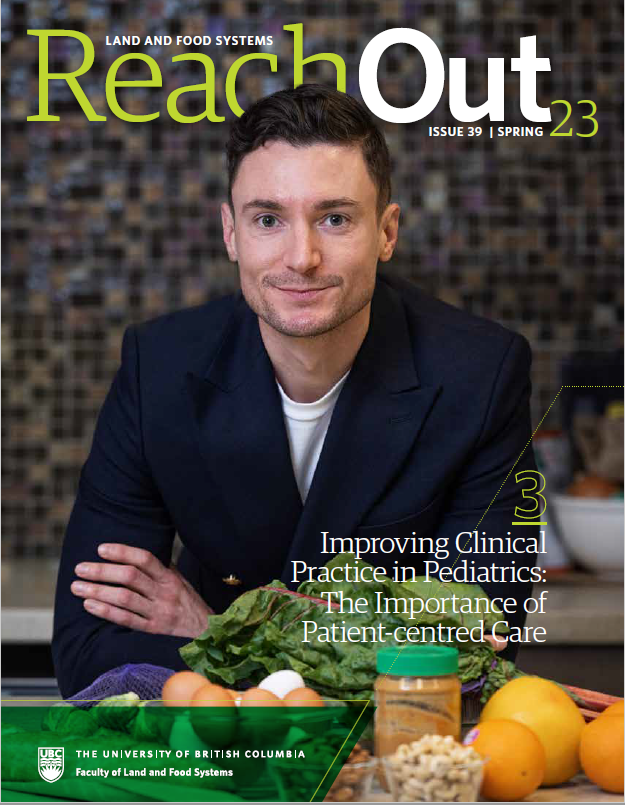Going High Tech in Animal Agriculture
Imagine a future where animals – like many humans – wear Fitbit-like devices.

Varinia Cabrera has tested 30 different prototypes of sheep monitors in Uruguay for her master’s thesis at Universidad de la República. As an electrical engineering student, she hopes to reduce lamb mortality with wearable electronics that, in the future, will be able to track the exact time a sheep has given birth.
She arrived at UBC in January 2023 through the competitive Emerging Leaders in the Americas Program. The short-term student exchange program allows her to spend six months at UBC where she will study at both the Vancouver campus and the Agassiz Dairy Education and Research Centre.
She was drawn to UBC’s Animal Welfare Program for its transdisciplinary research that uses technology and data analysis to improve the health and wellbeing of animals.
“Transdisciplinary work is essential because it gives purpose to the technology that engineers develop,” says Cabrera.
Although agricultural and animal industries are key sectors in Uruguay, finding transdisciplinary research centres that develop technologies to improve animal welfare is complex. In Canada, this specific line of research is found at the Animal Welfare Program at UBC.”
Wearable devices are a growing trend in industrial agriculture worldwide. The data collected from each individual animal can more accurately pinpoint health information that can be used, for example, to predict and prevent illnesses.
“I’m learning how to approach and interact with animals in a safe way that doesn’t negatively impact their wellbeing,” she says. “The UBC dairy centre is running many projects using technology, such as the use of automated feeders to track when and how much cattle eat, and sensors that monitor the body temperature of animals.”
Under the supervision of Dr. Dan Weary and PhD student Sky Sheng, one of Cabrera’s projects involves using technology to better detect lameness in dairy cows. Lameness is painful to cows and is a major problem for dairy farmers. Sometimes a lame cow can be hard to identify, but Cabrera is using technology to splice videos of cows in such a way that two cows can be viewed side by side, allowing for much easier evaluation of which cow is more lame. Cabrera is now using data from these pairwise comparisions to develop rankings for the herd, and in this way allow for rapid (and automated) assessments of which cows need treatment.
Back at home in Uruguay, Cabrera works under the supervision of Dr. Julián Oreggioni and Dr. R. Ungerfeld at the Universidad de la República. Uruguay is a major exporter of animal products (there are 3.5 cows to every person, according to Cabrera), and she hopes her work (and the lessons she is learning at UBC) will help improve the lives of farm animals in her home country.
“Sheep roam free in Uruguay and could be kilometres away from a farmer so if a lamb is abandoned, it may not be known. If we know this, we could take steps to have the lamb mothered by another sheep. My dream is to do long-term studies of sheep from a distance.”
Dr. Weary hopes this connection to Cabrera and her supervisors will lead to further collaborations, building on the learnings from both countries. “Our research is heavily dependent on engineering and data science as applicable to agricultural research. Dr. Oreggioni and Dr. Ungerfeld’s research expertise on farm-monitoring systems presents an excellent opportunity to integrate our research.”
Tagged with: 2023, Animal Welfare Program, Graduate
